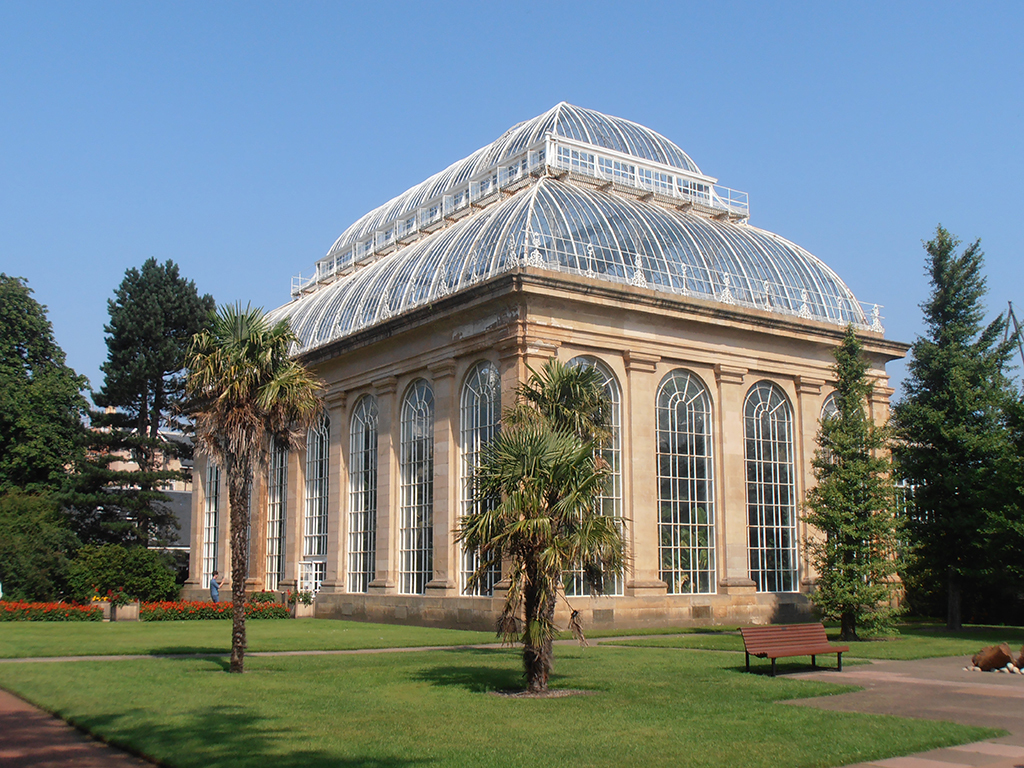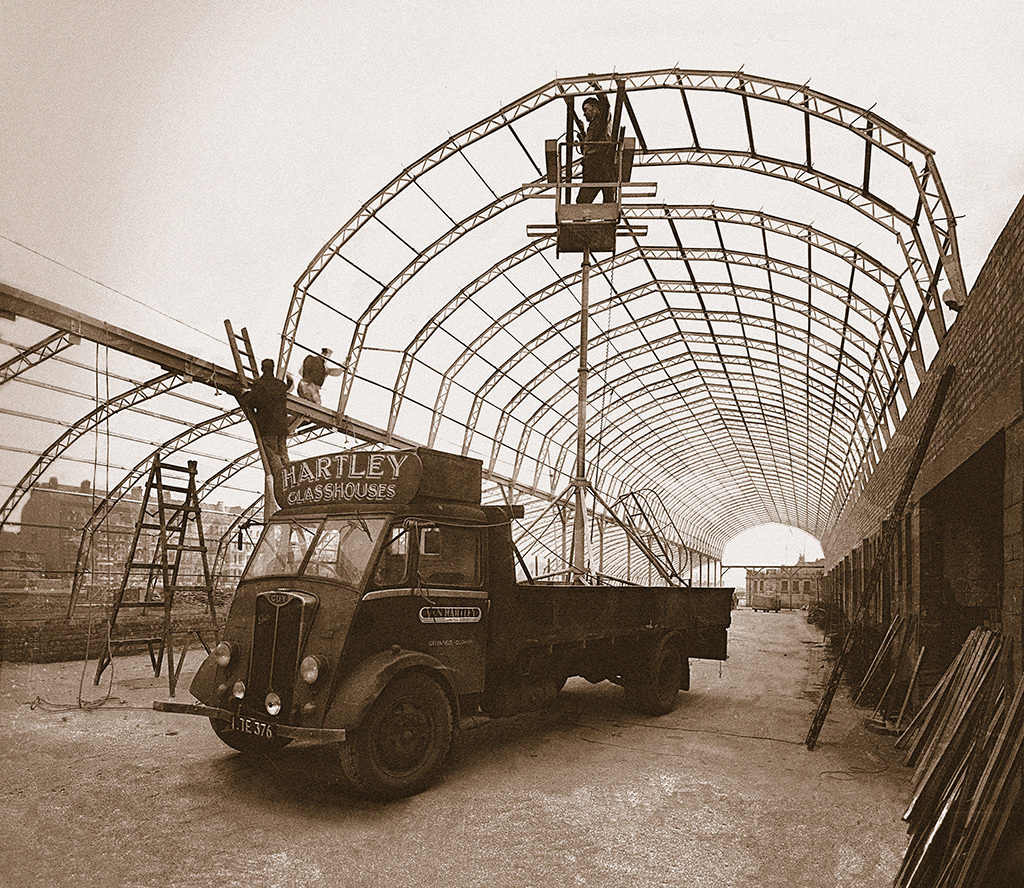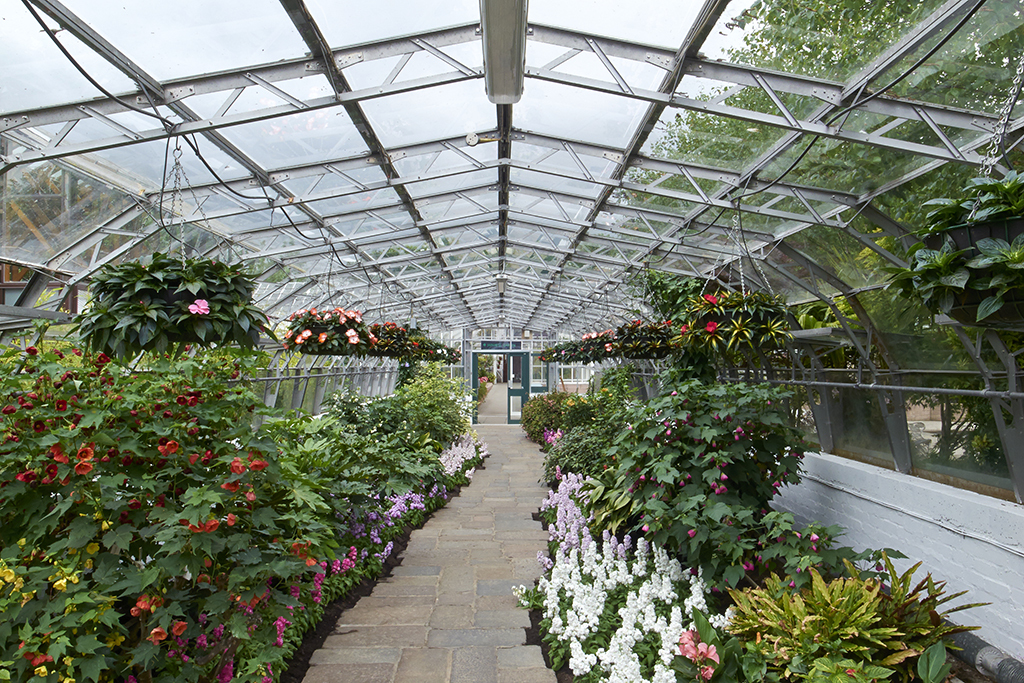
The glass act in the heart of an Aberdeen park
Outside, it’s five degrees below. Inside the glasshouse at Duthie Park Winter Gardens in Aberdeen, steam rises as a gardener in shorts and flip-flops plays a hose across the floor.
On a day like this, the Winter Gardens live up to their name; where else can you find bougainvillea in flower when there’s snow on the ground?
John Claudius Loudon invented the concept of a winter garden, then coined the term ‘artificial climate’ to describe what he’d created. Loudon was born in Scotland, but made his name during a publishing career in London. He was one of the 19th century thinkers behind Agricultural Improvement, and his writing was also influential in Victorian horticulture and landscaping.
For commercial growers, glasshouses are factories for producing tomatoes, flowers and fruit. They’re controlled environments, where growing conditions are manipulated to ensure the crop is ready for market at the right time. Around 1818, Loudon put forward a different notion. His winter garden, made from iron and glass, could be somewhere to stroll around, enjoying exotic plants during the worst of the weather.
The 1840s palm houses at Kew were among the first iron-and-glass structures, and they were followed by the original Crystal Palace, which was created for the Great Exhibition of 1851 in Hyde Park by Joseph Paxton. The Crystal Palace began life as a sketch on a piece of blotting paper, yet it became the prototype for every glass building that followed. As the French architect Le Corbusier wrote, it was the herald of a new age of glass architecture.

The Royal Botanic Gardens in Edinburgh
Paxton, untrained as either architect or engineer, was the Duke of Devonshire’s gardener and was certainly familiar with Loudon’s ideas. After the Crystal Palace, Loudon’s concept circled the world before taking root in his home country, inspiring the Kibble Palace in Glasgow, Royal Botanic Gardens in Edinburgh and Duthie Park in Aberdeen.
In 1880, Elizabeth Duthie gifted land on the banks of the Dee to the Corporation of Aberdeen, to form a park in memory of her uncle and brother, who were a writer to the signet and an advocate, respectively.
The wider Duthie family made its money in shipping, then latterly in rope-making. One of their shipyards was eventually taken over by Hall Russell and the other closed between the Wars – but the family name lived on in Elizabeth’s bequest.
The new park was designed by William McKelvie, a surveyor from Dundee who also designed Balgay Park in his home city. Duthie Park opened in 1883 and the first winter gardens were constructed in 1891. The main glasshouse in Duthie Park followed in 1899, a long aisle built from St Petersburg redwood and glass, with a raised dome to accommodate palm trees.
Seventy years later, the glasshouse was hit by a winter gale which destroyed its main span. It had to be pulled down, but thoughts soon turned to its replacement. The new winter garden, which was commissioned in 1969, is a far more radical building.

Hartley Botanics built the new Winter Gardens (Photo: Hartley Botanics)
Almost a century after the iron-framed Crystal Palace opened, Vincent Hartley re-imagined the glasshouse as a series of trussed arches made from aluminium. At the turn of the 20th century, aluminium was a semi-precious metal. To begin with, it was hugely expensive to refine – but thanks to vast increases in production from new smelters at Foyers and Kinlochleven it gradually became the universal material it is today.
By the 1930s, aluminium alloys were used to make aircraft engines, car bodies, cooking pots – and in horticulture. In 1938, Hartley patented his original aluminium glasshouse, which consisted of a series of a segmental arches shaped like a semi-dodecagons. That exotic geometry still looks radical today, compared to traditional Vinery or Aeroplane-type greenhouses with their ridge-and-furrow roofs.
Glasshouses are, of course, all about light. Loudon enthused about the ‘immense teguments of glass’ in his winter gardens, and Hartley’s glasshouses maximised the amount of incident light entering the house by using slender aluminium spars rather than the chunky timber rafters of the original Stove House in Duthie Park.
Aberdeen turned to Hartley’s firm to design and build its new Winter Garden, which opened in 1972 and now includes a Fern House, Temperate House, Tropical House and an Arid House. So it is that the progress of the winter gardens at Duthie Park is also the progress of glasshouse technology.
Today, the state-of-the-art has moved on again, with commercial growers favouring polytunnels for many crops, while modern winter gardens, such as the biomes at the Eden Project in Cornwall, are glazed with pillows of PFTE plastic, which is a by-product of the Space Race.
Meantime, the newest addition to Duthie Park is the entrance block to the Winter Gardens, which was designed in 2002 by Doug Ure of the City Architect’s Department. Alongside a long wall of sandstone is a neat cube: its sides and roof are made from sheets of structural glass connected using metal ‘spiders’. The result is a sparkling prism which leads through to the glasshouses proper.
Are the Winter Gardens still true to John Loudon’s original vision? Stand for a while in the Arid House, and the slim sections of aluminium lose themselves behind the cacti and succulents. If you suspend disbelief for just a moment, you might be standing in the Mojave Desert.
With thanks to Colin Stuart, formerly of Aberdeen City Council, for his help in the preparation of this feature.

A view down the Scented Corridor (Photo: Mark Chalmers)
TAGS

